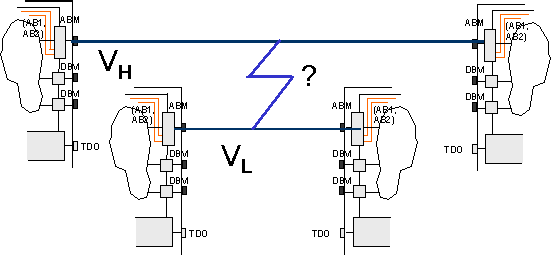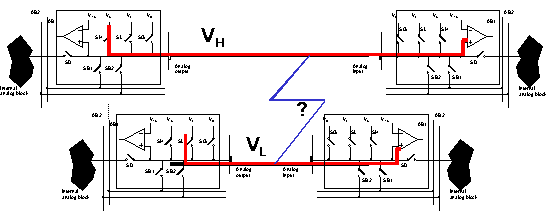[previous] [next] [contents]
![]() Short
circuit detection with 1149.4
Short
circuit detection with 1149.4
As opposed to extended
interconnect testing, which refers to measurements in passive
components interconnecting analog pins, simple interconnect testing
addresses the detection of the usual structural defects, such as short and
open circuits. It is important to refer that simple interconnect testing
is entirely digital, in the sense that fault detection is carried out by
shifting (in / out) test vectors / responses.
The basic
principle underlying the detection of short-circuits among analog pins may
be presented as shown in figure 1. Such as for digital pins, the detection
procedure consists of applying complementary “logic values” (VH,
VL) to the interconnects under test.

Figure
1: Short-circuit
detection among analog pins.
By recalling
the switching structure of the ABMs, it becomes clear that the application
of VH and VL voltages can be accomplished by closing
switches SH and SL (e.g. by shifting appropriate
4-bit words into the ABM control structure section of the BS register).
The comparators present in this switching structure will then convert the
voltage levels at the analog inputs into a digital value, which is read at
the first stage of the same 4-bit ABM control structure. The whole process
is therefore carried out by shifting in / out through the BS register, and
the ATAP pins do not play any role in the simple interconnect test
procedures.

Figure
2: Switching structure
configuration for simple interconnect testing.